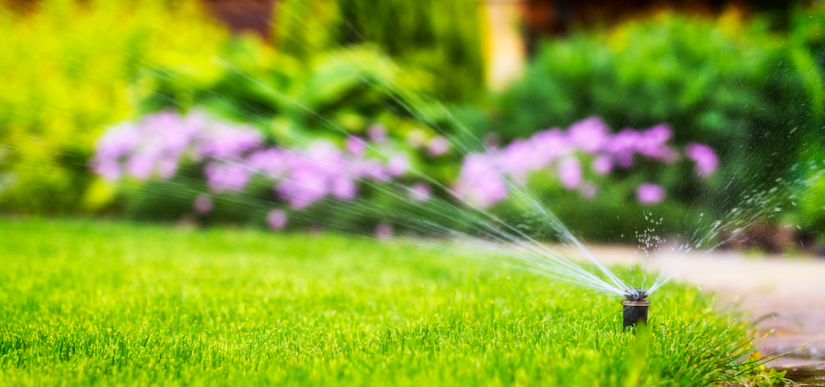Sprinkler Blow Outs - The "Why" and "How": 3 Easy Points
Sprinkler Blow Outs: What Does Winterizing Mean?
So what is the deal with sprinkler blow outs? If you live in a winter cold climate and need to winterize your sprinklers, what does that even mean and why do it?
Hunter Industries described it this way,
"Even if you have drained the water out of your irrigation system, some water remains and can freeze, expand, and crack PVC piping (rigid, white pipe). Polyethylene pipe (flexible, black pipe) is used in many freezing climates. Although polyethylene pipe is more flexible and can expand under pressure, water left inside can freeze and rupture the pipe walls. Freezing water in the backflow assembly will damage the internal components and can crack the brass body.
To minimize the risk of freeze damage, you'll need to winterize your irrigation system. In areas where winterization is mandatory, irrigation systems are installed using one of three types of water removal: manual drain, auto drain, or blowout. If you don't know your system type, it is best to use the blowout method."
Sprinkler Blow Outs: Why Winterize?
There are several reasons to winterize irrigation and basically, it's to keep your irrigation from getting damaged. Landscape East explained it like this,
"1. Freezing temperatures can seriously damage irrigation systems.
When water freezes, it expands. Eleven cubic feet of water will become twelve cubic feet of ice. This hydro-expansion can cause fittings, sprinklers, valves, pumps, pipes and other parts of irrigation systems to burst and break. Draining your system of all water is the only way to ensure that it will still be in working order when spring arrives.
2. Your warranty could be voided if you don’t winterize.
Irrigation services recommend that you “blow out” your irrigation system rather than relying on gravity to pull all of the water out of the pipes, valves and other parts. Indeed, many irrigation services void their labor and parts warranties if the homeowner fails to arrange for blow out winterization services.
3. You can save money on expensive irrigation system repairs.
If your irrigation system freezes, the resulting expansion could cause most of the components to be destroyed, meaning that you will have to pay someone for irrigation system repair.
For these reasons, now is the time to winterize your irrigation systems – before November’s colder weather arrives. October is an ideal month for winterizing irrigation systems since most parts of the country don’t have a hard freeze until later in the year."
Sprinkler Blow Outs: Blowing Out Sprinklers
The best recommendation for blowing out your sprinklers if you're not familiar with it is to hire a professional. The cost to have your sprinklers blown out is pretty affordable and ranges anywhere from about $20-$50.
The Family Handyman created a guide for blowing out your own sprinklers. There it says,
"With a basic quick-connect coupling, you can use your air compressor to clear water from your sprinkler system for the winter. Just be aware that even the largest home compressor isn’t powerful enough to blow out the entire system at once. But you can probably blow it out zone by zone.
If you’re into number crunching and you have the original irrigation layout showing the gallons per minute (gpm) of each sprinkler head, just divide the total gpm of each zone by 7.5. That’ll give you the cubic feet per minute (cfm) you need to blow it out. Otherwise, just rent a 10-cfm compressor and hose from your local tool rental center.
Set the compressor air pressure regulator to a maximum of 80 psi for rigid PVC pipe systems, or 50 psi for flexible black polyethylene pipe. Then turn off the water supply and set the system timer to open just one zone. Next, open the manual drain valve at the end of that zone (if equipped). Then, connect the air line to the blow-out port as shown. Connect the other end of the air hose to the compressor and blow out the line. The heads should pop up and spit out water. Disconnect the hose as soon as they run dry. Don’t overdo the blowout—without water cooling the plastic gears, they can melt in less than a minute. So move on to the next zone and allow the heads to cool. Then go back and blow out each zone a second time.
Required Tools for this Project
Have the necessary tools for this DIY project lined up before you start—you’ll save time and frustration.
- Air compressor
- Air hose
Required Materials for this Project
Avoid last-minute shopping trips by having all your materials ready ahead of time. Here’s a list.
- Quick-connect hose adaptor"
In addition, you can visit Keylock Storage Blog for more interesting articles about organization and lifestyle: keylockstorage.com/blogs



